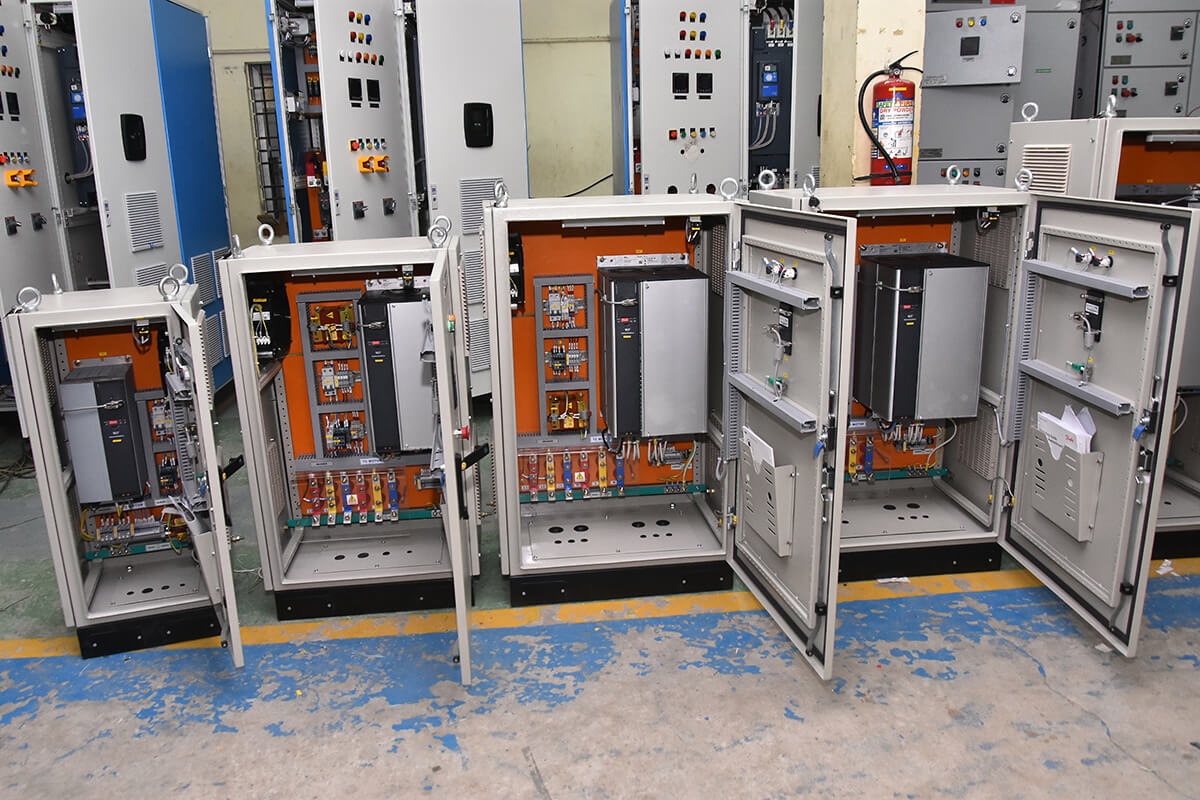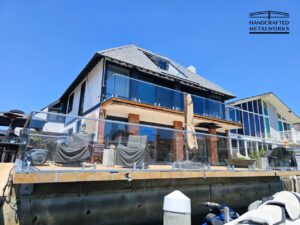What Is a Drive Control Panel and Why Does Your Industry Need One?
Drive control panels are no longer just an option for industrial operations—they’re a necessity. Whether you’re running a small factory...

Drive control panels are no longer just an option for industrial operations—they’re a necessity. Whether you’re running a small factory or a large-scale manufacturing unit, using a drive panel can improve energy use, cut downtime, and bring smoother automation to your plant.
In this blog, we’ll explain everything about drive control panels, how they work, and why they’re such an essential part of industrial automation. If you’re looking for reliable control panel manufacturers, or simply want to understand how these systems can help your setup, you’re in the right place.
Let’s break it all down step by step.
What Is a Drive Control Panel?
A drive control panel is an electrical enclosure that houses the components necessary to operate, control, and protect electric motors using a variable frequency drive (VFD). These panels are designed to provide accurate speed, torque, and motor performance control.
Here’s what a standard drive panel usually contains:
- Variable Frequency Drive (VFD)
- Main breaker or isolator switch
- Overload relays
- Motor protection circuit breakers
- Contactor or soft starter
- Programmable Logic Controller (PLC) (optional)
- Human Machine Interface (HMI) (optional)
The panel regulates the motor speed and torque based on process requirements, helping improve productivity and reduce energy costs.
Why Is a Drive Control Panel Important?
There are several reasons industries rely on drive panels:
1. Energy Efficiency
By controlling the motor speed, drive panels reduce energy use. Motors typically consume more power when run at full speed unnecessarily. A drive panel fixes this by matching speed to actual demand.
Fact:
Using VFDs in drive panels can reduce energy consumption by up to 30–60% in some applications (source: U.S. Department of Energy).
2. Better Motor Protection
Drive control panels monitor and adjust motor output. They provide protection against overloads, phase loss, and short circuits, reducing the risk of motor failure.
3. Reduced Wear and Tear
Since motors aren’t always running at full speed, wear and tear reduce. This leads to longer motor life and lower maintenance costs.
4. Process Accuracy
With real-time monitoring and control, industries can maintain consistent output quality.
5. Remote Monitoring and Control
With PLC and HMI integration, many panels allow centralized or remote operations—ideal for smart factories and large units.
How Does a Drive Panel Work?
At its core, the drive control panel regulates voltage and frequency supplied to the motor. Here’s a simplified flow:
- Input power enters the panel
- The breaker or isolator protects the system
- The VFD adjusts voltage and frequency
- Output goes to the motor based on set parameters
- Sensors and PLCs feedback performance data
This control loop helps maintain desired speed, torque, and process accuracy.
Key Components Explained
Variable Frequency Drive (VFD)
The VFD is the heart of the panel. It converts incoming AC to DC, then back to variable-frequency AC to control the motor speed.
Overload Relays
These protect motors from overheating due to overcurrent.
Circuit Breakers
They act as safety switches and disconnect the circuit in fault conditions.
PLCs and HMIs
While optional, these make the system smarter. They allow auto-control logic and user interaction.
Common Applications of Drive Control Panels
Drive panels are used across a wide range of industries. Some of the most common include:
- Water treatment plants
- HVAC systems
- Conveyor belts
- Packaging machines
- Cement plants
- Plastic manufacturing
- Food processing
Anywhere motors are used, drive panels can be found.
Signs You Need a Drive Panel Upgrade
Not sure if your system needs an upgrade? Watch for these signs:
- Motors frequently burn out or overheat
- Your power bills are unusually high
- Manual start-stop operations slow things down
- You’re expanding and need better automation
- Maintenance costs are rising due to motor faults
If you’ve nodded yes to even two of these, it’s time to talk to control panel manufacturers.
What to Look for in Control Panel Manufacturers
If you’re planning to buy a drive panel, choosing the right manufacturer matters. Here are key factors to check:
1. Experience and Specialization
Are they specialists in drive panels or general control equipment makers?
2. Customization Capability
Can they design panels suited for your voltage, motor rating, and process?
3. Certifications and Standards
Look for compliance with IEC, IS, or other relevant safety standards.
4. After-Sales Support
Drive control panels are technical—choose a partner who offers reliable support.
5. Testing and Quality Checks
Ask if each unit is tested in-house before delivery. Avoid brands that skip testing.
Cost of Drive Control Panels
The price of a drive control panel depends on:
- Motor power range (in HP or kW)
- Type of drive (VFD brand and size)
- Type of panel enclosure
- Add-ons like PLCs or HMIs
- Custom wiring or relay logic
For small applications, panels may start from ₹30,000, while large industrial ones can exceed ₹2 lakhs or more.
Maintenance Tips to Keep Panels Working Smoothly
Just like any equipment, drive panels also need periodic checks. Here’s how to keep them running:
- Inspect for dust and moisture every 3 months
- Check cable tightness and insulation
- Update PLC/HMI software when needed
- Ensure cooling fans and filters are clean
- Schedule annual load testing
The Future of Drive Control Panels
With Industry 4.0 gaining momentum, drive panels are also evolving. Expect features like:
- Cloud-based monitoring
- Predictive maintenance using IoT
- Auto alerts via mobile or email
- Touch-based HMI controls
- AI-assisted process optimization
Industries that adapt to smarter drive panels will likely see more efficiency and fewer disruptions.
FAQs: Drive Control Panels
What is the purpose of a drive control panel?
To regulate motor speed and torque while ensuring safety and process control.
How does a drive panel save energy?
By adjusting motor speed based on demand using VFDs, avoiding unnecessary power use.
Who should install a drive panel?
Electrical contractors or certified control panel manufacturers with VFD experience.
Why is a VFD important in a drive panel?
Because it controls frequency and voltage, giving precise control over motor performance.
Where are drive panels most commonly used?
In industries that use motors: water plants, HVAC systems, conveyors, and manufacturing lines.
Will installing a drive panel reduce downtime?
Yes. With smoother control, fewer overloads, and better protection, overall downtime drops.
How do I select the right control panel manufacturer?
Check their experience, service track record, customization abilities, and certification standards.
What are the maintenance requirements?
Monthly dusting, quarterly inspections, and yearly full checks are recommended.
Final Thoughts
Whether you’re setting up a new unit or upgrading an old system, a drive control panel brings immediate and long-term advantages. From energy savings and motor protection to automation and remote access, it’s one of the smartest investments you can make.
If you’re searching for trusted control panel manufacturers, ensure they match your technical needs, budget, and support expectations. A well-built drive panel will run smoothly for years and improve your entire process flow.




